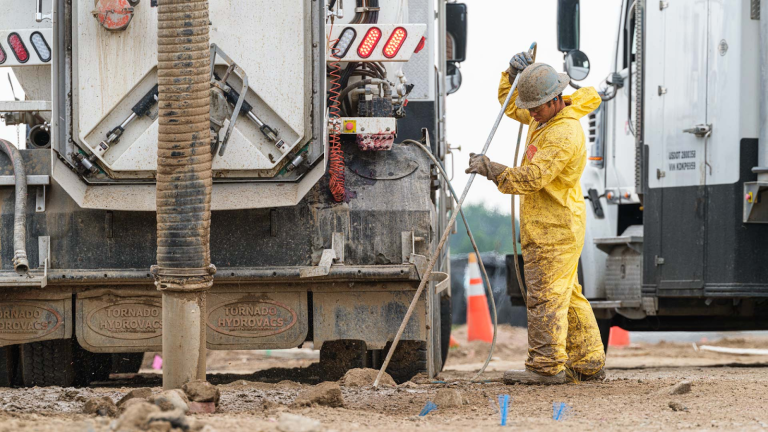With house prices remaining high and moving costs showing no sign of coming down, many homeowners across the UK are looking at ways to make the most of the space they already have. For families craving an extra bedroom, a home office or a private retreat, loft conversions have become one of the most popular ways to expand without packing up and moving on. But as the cost of construction continues to rise, many people naturally wonder if a loft conversion is still worth it in today’s housing market.
Depending on where you live, the answer can vary. Demand, local house prices, planning restrictions and buyer expectations all shape whether adding that extra floor will pay off when it comes time to sell. From the historic streets of Oxford to the capital’s crowded terraces, here’s how loft conversions stack up in different parts of the UK.
Oxford: Adding Space Without Leaving the City
Oxford has long been one of the UK’s most competitive housing markets. With its beautiful period properties, thriving academic community and stunning green spaces, the city attracts both families and professionals who want easy access to London while enjoying a quieter pace of life. But Oxford’s charm comes at a cost. Property prices in the city and surrounding villages regularly sit well above the national average, and the demand for family homes with extra bedrooms is particularly strong.
For many Oxford homeowners, a loft conversion makes practical sense. Many terraces and semi-detached houses built in the Victorian and Edwardian periods come with generous roof spaces that can be transformed into a master suite, guest room or study. Because the city is full of conservation areas and listed buildings, getting planning permission can take a little more thought, especially if dormer windows or roofline changes are needed.
However, the premium buyers place on well-renovated period homes means that a sympathetic loft conversion often adds more value than it costs to complete. A smartly designed loft that blends original features with modern comforts tends to appeal to Oxford’s professional buyers who want to stay in the city rather than move to the outskirts.
London: More Space Without the Moving Hassle
In London, where average house prices are among the highest in the country, every square foot counts. Moving just one rung up the ladder can easily cost thousands in stamp duty alone, not to mention the logistical stress of relocating in a city notorious for traffic and parking nightmares.
This has driven demand for loft conversions throughout the capital, from terraced streets in Hackney to family homes in Wimbledon and Ealing. Many London terraces were built with generous roof spaces that lend themselves well to dormer or mansard conversions. Adding a loft bedroom and bathroom often turns a cramped two-bedroom house into a comfortable three- or four-bed home, making it much more attractive to buyers with growing families.
For homeowners in London’s more desirable postcodes, the return on investment can be significant, provided the work is done to a high standard. Buyers often expect loft conversions in certain areas as part of the ‘complete package’. Poorly designed conversions with steep stairs, limited head height or a lack of natural light can be off-putting, so it’s worth spending extra on thoughtful design.
Manchester: A Popular Choice for Growing Families
Manchester continues to attract families and young professionals thanks to its vibrant culture, strong jobs market and relatively affordable property prices compared to the south. Many of the city’s Victorian terraces and 1930s semis come with roof spaces ideal for converting, and permitted development rules often mean homeowners don’t need full planning permission for a simple loft room.
With house prices rising steadily in Greater Manchester, a loft conversion can be a cost-effective way to stay put while gaining much-needed space. This is particularly true in family-friendly suburbs like Chorlton, Didsbury and Sale, where larger homes command a healthy premium. For homeowners who plan to stay for several years, the extra room can transform daily life, while the added value helps future-proof their investment.
As Manchester continues to grow, buyers increasingly look for homes that are ready to move into. A well-finished loft with good insulation, storage and proper building regulations sign-off can set a property apart in a busy local market.
Bristol: Balancing Style and Practicality
Bristol’s unique blend of historic architecture, creative culture and green spaces has made it one of the UK’s most desirable places to live. Terraced houses in areas like Bishopston, Redland and Bedminster are hugely popular with families and young couples alike. However, finding an affordable way to upsize within the city limits can be tough.
Loft conversions are a common sight across Bristol’s suburbs. Many homeowners see it as the most practical way to gain an extra bedroom or a work-from-home space, especially as hybrid working remains popular. A well-designed loft room with plenty of light and thoughtful storage can dramatically improve how the rest of the house functions.
The city’s steep streets and distinctive rooflines mean not every house is an easy candidate for a loft conversion. In some parts of Bristol, conservation areas add extra planning considerations, particularly when dormer extensions affect the look of the street. But when it’s done right, the added space can increase a home’s value well beyond the cost of the build.
Edinburgh: Making the Most of Period Properties
In Scotland’s capital, loft conversions have long been a popular way to unlock extra space in classic tenement flats, Victorian villas and Georgian townhouses. Edinburgh’s housing market remains competitive, particularly in popular areas like Morningside, Marchmont and Stockbridge, where period charm and extra bedrooms command a premium.
Converting a loft in a traditional Edinburgh property can be more complex than elsewhere, especially where listed building status or conservation rules apply. In many cases, homeowners need to strike a balance between preserving the architectural character and creating a modern, usable room. Roof trusses, low eaves and older building materials can add to the cost and time involved, but the payoff is often worth it.
For families who want to stay within the city’s school catchments or close to work, a loft conversion can mean avoiding an expensive move to a larger house. Edinburgh buyers are typically drawn to thoughtful conversions that add space without compromising the original features that make these homes so special.
Why Loft Conversions Still Make Sense
Across the UK, loft conversions continue to be one of the most cost-effective ways to add both living space and long-term value. While building costs have risen in recent years, the shortage of good-sized family homes means demand remains strong for properties that use their space well.
Adding an extra bedroom can push a house into a higher price bracket, especially in competitive urban markets where location and usable space are everything. For many homeowners, the decision comes down to weighing the cost of the build against the likely boost in value, alongside the simple benefit of making daily life more comfortable.
Beyond the immediate gain in usable space, homeowners should also consider long-term running costs and regulatory requirements when planning a loft conversion. A properly insulated, airtight loft hatch can make a measurable difference to heat retention and help meet Part L expectations; modern low-profile designs with multiple insulation options and draught seals are simple, cost-effective measures to improve energy performance. For detailed examples and specifications, see Access Panels Direct’s selection of loft doors. Many of these hatches are supplied with the fixings and seals needed for an easy retrofit alongside other conversion works.
In areas like Oxford and London, where high house prices make upsizing prohibitively expensive, a loft conversion can feel like the only sensible option. In cities like Manchester, Bristol and Edinburgh, the added space makes it easier for families to stay put and enjoy the area they love, rather than facing the stress of a move.
Done properly, a loft conversion can transform an underused attic into one of the best rooms in the house. Bright windows, good insulation and clever design turn dark storage spaces into light-filled bedrooms, creative studios or peaceful retreats. And when the time comes to sell, many buyers see that extra space as a ready-made solution for their own growing families or hybrid working needs.















+ There are no comments
Add yours